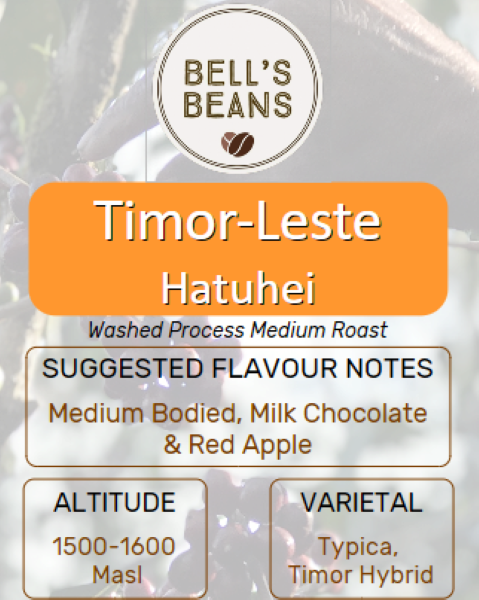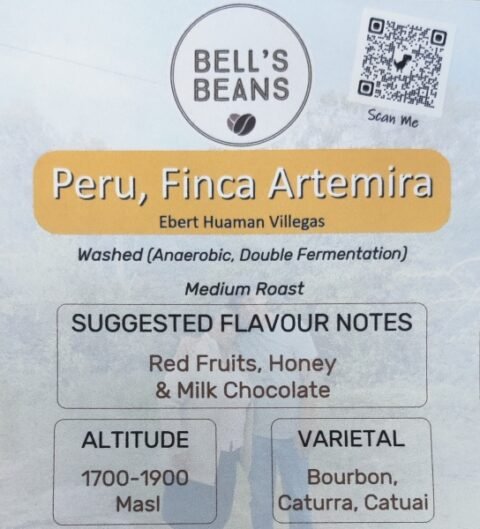Description
Overview of Timor-Leste (East Timor)
Situated in South-East Asia, approximately 1,000 miles east of Bali, lies the tropical island of Timor-Leste. With its lush green mountains and crystal-clear blue waters, this may look like an idyllic paradise, but the reality is that this small country holds a troubled and complicated history. Timor-Leste holds the unenviable accolade of being one of the few countries in the world to have been both colonised and annexed; colonised by Portugal from 1600s to 1975 and annexed by Indonesia from 1975 to 1999. Having finally gained independence for a second time in 2002, Timor-Leste is now the world’s second youngest nation state and trying hard to find its voice in the geo-political world of the 21st century after centuries of subjugation.
Coffee was first introduced to the island by the Portuguese and by the 1900’s was the country’s leading export, however the industry suffered greatly during the years of Indonesian annexation when the sector was largely ignored. Fast forward to the present day and you will see that the coffee farmers of Timor-Leste are working hard to collectively carve out a place for Timorese coffee in the global speciality coffee market, in addition to replenishing and rehabilitating their coffee forests which were so overlooked during the struggle for independence during the latter part of the twentieth century.
One of the most special features about East-Timorese coffee is that it is all organically grown underneath the imposing Ai-Kakeu (Casuarina) and Ai-Samtuku (Albizia) shade trees that dominate the mountainous coffee growing regions. Only natural fertiliser is used (consisting of chicken poo, cherry skin and soil) to nourish the soil and due to the country’s lack of development and strong animist beliefs, chemical fertilisers have yet to be introduced into agricultural practices.
With time old traditions in processing coffee, passed on from generation to generation, coffee is gradually helping to build up more opportunities for Timorese people to create a consistent and sustainable income from which to support and provide for their families and the local community. Thank you for helping us to spread the word about East Timorese coffee and firmly putting this new and exciting speciality origin on the coffee map.
Hatuhei
Origin: Hatuhei, Letefoho, East Timor
Producer Group: Hatuhei Cooperative (32 farmers)
Lead Farmer: Carlos de Deus
Altitude: 1500-1600 masl
Varietal: Typica, Timor Hybrid
Process: Fully Washed, African bed drying
Separated and Graded: Screen sizes 17-15
What we taste: Green Apple, Floral, Caramel
The Timor Coffee Variety
The name “Timor-Leste” may sound familiar because the word “Timor” is also the name of a widespread coffee variety. “Timor” also appears in other varieties like “Catimor” or “Sarchimor”, names that, like their coffees, are hybrids of the two parent plants’ names.
It’s no coincidence the name “Timor” is so ubiquitous in our variety names, the first widely studied hybrid was found growing in Timor-Leste in the 1920s. The hybrid was the product of one Robusta and one Arabica plant mating. The resulting plant, which soon came to be known as Hybrido de Timor, after the island on which it was found, took on traits from both parent plants. The Timor hybrid was resistant to coffee leaf rust (CLR), like its Robusta parent, but also had higher cup quality, thanks to its Arabica parent.
The discovery of the Timor Hybrid coincided with the expansion of CLR across most of Central and East Africa and Asia. Since CLR spores can remain in soils long after the infected plants die (making it difficult to replant the same varieties), new CLR-resistant hybrids became essential to revitalizing coffee production in these regions. Since Timor’s discovery, scientists have bred countless other hybrid varieties to combat the CLR epidemic and the older Timor variety has played a central role in continuing to breed new resistant varieties with good cup quality, such as Marsellesa, Obata and Oro Azteca, to name a few.
A Word From Karst Organics
This is the fourth year of working together with the Hatuhei group, situated in the south-eastern part of Letefoho, in one of the region’s most remote and difficult to access areas. Whilst the drive there during the dry season is possible, during the wet season, Hatuhei is completely cut off from the rest of Letefoho, meaning that outside of the coffee harvest, opportunities to earn an income are few and far between for this community.
Hatuhei has now established it’s reputation as a group who process high-quality speciality coffee and we have been able to slowly expand the size of this group through inviting other members of the community to join and share in the increased income that processing speciality coffee together with Karst can bring.
Carlos continues to work closely together with Simao Pedro de Deus (Karst’s field manager and lead farmer of the Eratoi group,) so that all of the smallholder farmers from Hatuhei receive weekly support during the harvest to ensure that as this coffee gains in popularity and volumes increase, quality is never compromised. Only the ripest cherries are used to ensure optimum sweetness which usually requires an incredible amount of patience as multiple harvests are often needed during any given season. To ensure that optimum levels of processing are maintained, we have continued to invest in further processing materials within the community, including the purchase of two new traditional pulping machines.
Carlos has also been working tirelessly to encourage rehabilitation activities with the members of his group and this is a priority for us going forward in order to maximise yields and ensure increased earning potential. 2023 has also seen us build our first seedling nursery in Eratoi, where together with Simao, we will be looking to cultivate new coffee and shade tree seedlings. For every 10kg of green beans that we sell to our partner roasters, we will commit to planting one new coffee or shade tree seedling which will be distributed to our partner farmers (including members from Hatuhei) for planting at a later date, so a big thank you to you for helping us to achieve this goal.
Information and Pictures supplied by Karst Organics
How to store coffee at home
To keep your coffee as fresh as possible, you need to protect your coffee from air, sunlight, heat, and moisture. These all will contribute to making it stale and lose flavour.
We suggest keeping your coffee in an airtight container, in a cool, dry cupboard. Our bags all have a de-gassing valve, to let out CO2 that the beans produce once roasted, it’s not just there to sniff the coffee, and a reusable ziplock. So if you don’t have a fancy coffee jar just push the air out the bag, zip the lock and give the bag another squeeze to get any remaining air out.
Do not store your coffee in the fridge. Roasted coffee absorbs moisture from the air (hygroscopic) and will also take up surrounding aromas. The aromas and moisture levels in the fridge will react with the coffee and delicate flavours will deteriorate.
Need help on which grind size? Click here
News Letter
Fancy 15% off a coffee order? Then sign up to our news letter for a discount code, along with being the first to know about new coffees, special offers, tips and tricks.
Want to know more about Bell’s Beans?












Reviews
There are no reviews yet.